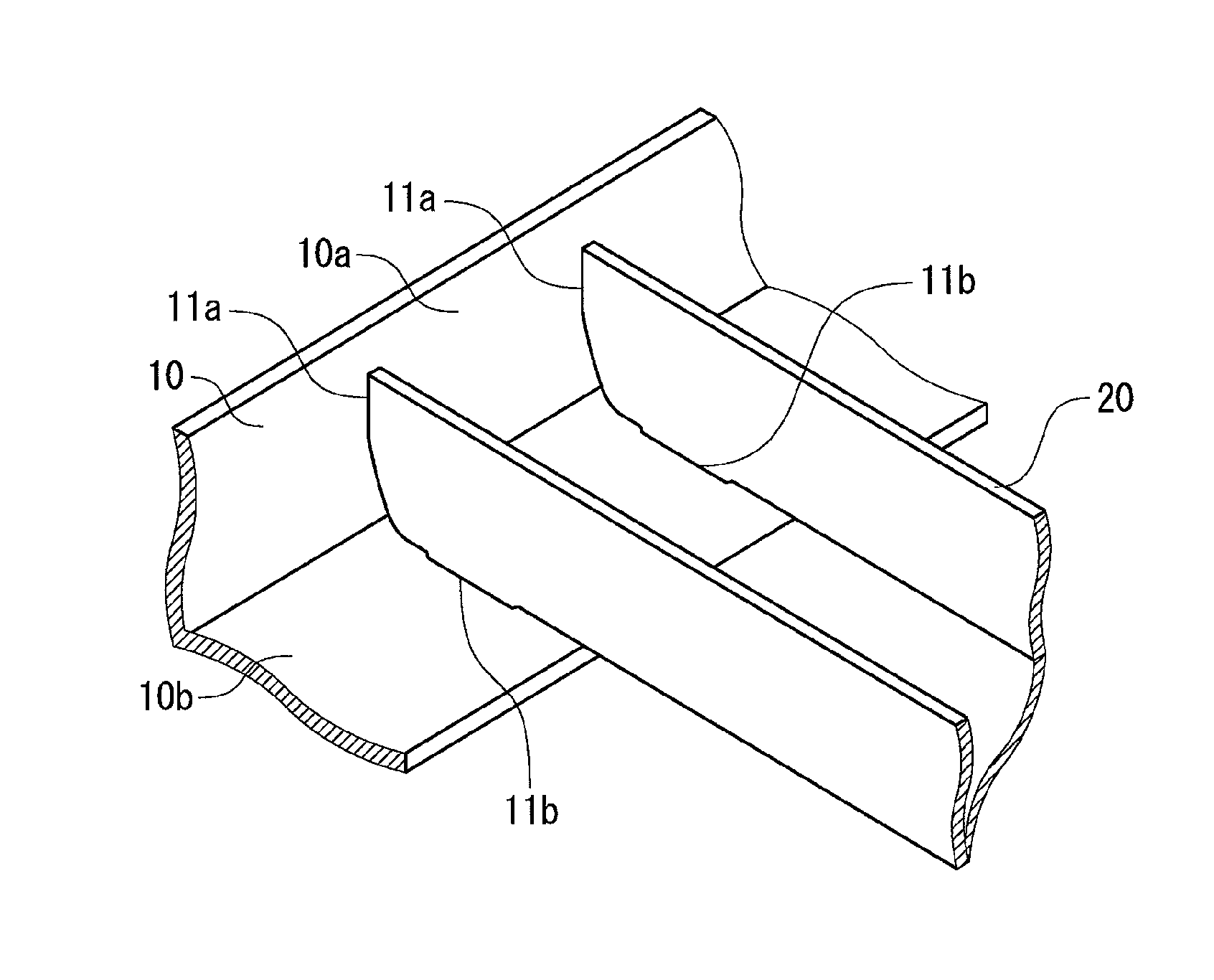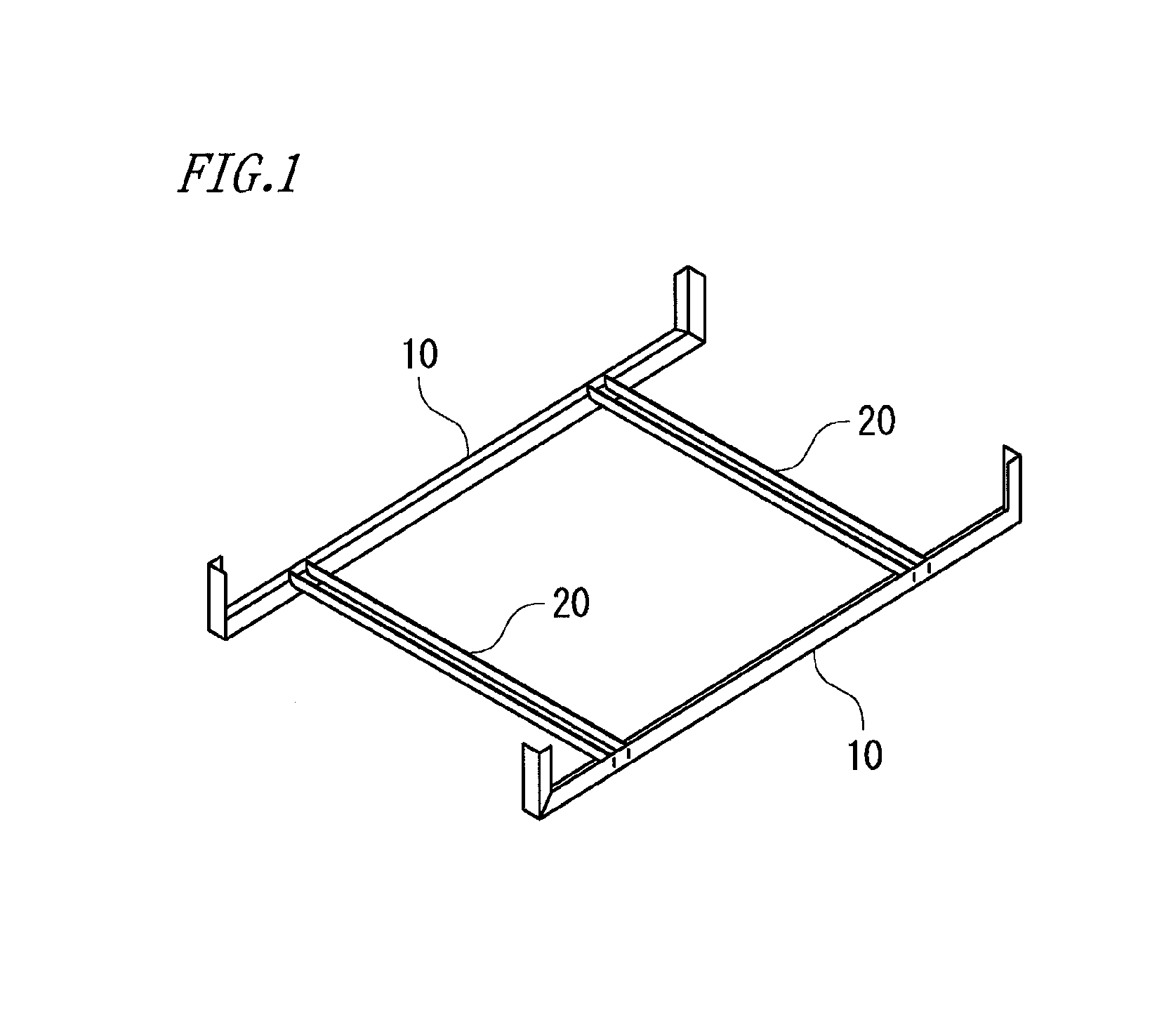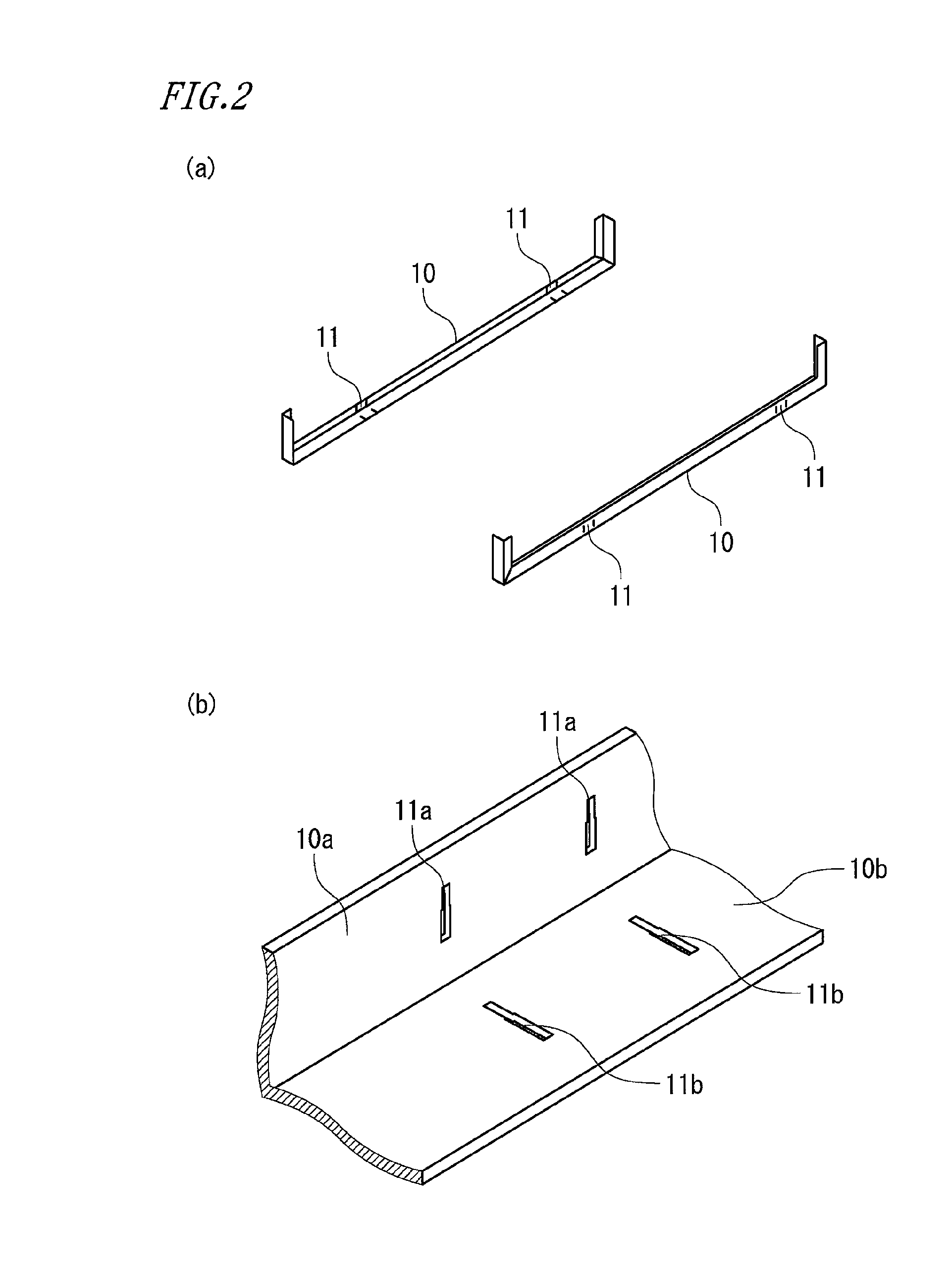Insertion frame structure and housing using same
- Summary
- Abstract
- Description
- Claims
- Application Information
AI Technical Summary
Benefits of technology
Problems solved by technology
Method used
Image
Examples
embodiment 1
[0032]FIG. 1 is a perspective view showing an insertion frame structure according to embodiment 1 of the present invention. FIG. 2 is a perspective view showing a primary member in the insertion frame structure of embodiment 1. FIG. 3 is a perspective view showing an auxiliary member in the insertion frame structure of embodiment 1. FIG. 4 is a perspective view showing a joint portion in the insertion frame structure of embodiment 1. FIG. 5 is a perspective view showing an assembly process of the primary member and the auxiliary member in the insertion frame structure of embodiment 1. FIG. 6 shows a left side view (a) and a front view (b) of a latch portion of the auxiliary member, and a sectional view (c) showing the way of insertion into a latch hole of the primary member, in the insertion frame structure of embodiment 1. FIG. 7 shows a side view (a) and a plane view (b) of a latch portion of the primary member in the insertion frame structure of embodiment 1. FIG. 16 is a perspec...
embodiment 2
[0046]FIG. 8 is a perspective view showing an insertion frame structure according to embodiment 2 of the present invention. FIG. 9 is a perspective view showing a primary member in the insertion frame structure of embodiment 2. FIG. 10 is a perspective view showing an auxiliary member in the insertion frame structure of embodiment 2. FIG. 11 is a perspective view showing a joint portion in the insertion frame structure of embodiment 2. FIG. 12 is a perspective view showing an assembly process of the primary member and the auxiliary member in the insertion frame structure of embodiment 2. FIG. 13 shows a left side view (a) and a front view (b) of a latch portion of the auxiliary member in the insertion frame structure of embodiment 2. FIG. 14 shows a left side view (a), a plane view (b), and a right side view (c) of a latch portion of the primary member in the insertion frame structure of embodiment 2. FIG. 15 is a sectional view of the latch portions of the primary member and the au...
embodiment 3
[0060]In the above embodiments 1 and 2, the latch holes 11a, 11b, and 11c of the first latch portion 11 of the primary member 10 each have a clearance (t+β) larger than the plate thickness t of the auxiliary member 20, and have, continuously from this clearance, a clearance smaller than the plate thickness t of the auxiliary member 20. On the other hand, in embodiment 3, the latch holes 11a, 11b, and 11c of the first latch portion 11 of the primary member 10 each have a clearance (t+β) larger than the plate thickness t of the auxiliary member 20, and have, continuously from this clearance, a clearance equal to the plate thickness t of the auxiliary member 20.
[0061]Since the clearances of the latch holes 11a, 11b, and 11c of the first latch portion 11 of the primary member 10 are equal to the plate thickness t of the auxiliary member 20, the convex portions 21a, 21b, and 21c of the auxiliary member 20 can be easily pressed into the latch holes 11a, 11b, and 11c of the primary member ...
PUM
 Login to View More
Login to View More Abstract
Description
Claims
Application Information
 Login to View More
Login to View More - R&D
- Intellectual Property
- Life Sciences
- Materials
- Tech Scout
- Unparalleled Data Quality
- Higher Quality Content
- 60% Fewer Hallucinations
Browse by: Latest US Patents, China's latest patents, Technical Efficacy Thesaurus, Application Domain, Technology Topic, Popular Technical Reports.
© 2025 PatSnap. All rights reserved.Legal|Privacy policy|Modern Slavery Act Transparency Statement|Sitemap|About US| Contact US: help@patsnap.com



